Decoupage is one of the most popular decoration techniques by gluing a picture to the surface. He is chosen for the unusual ideas, the uniqueness of the result and the creative approach to ordinary subjects. The choice of glue for decoupage is of great importance, the durability and aesthetic attractiveness of the craft depend on it.
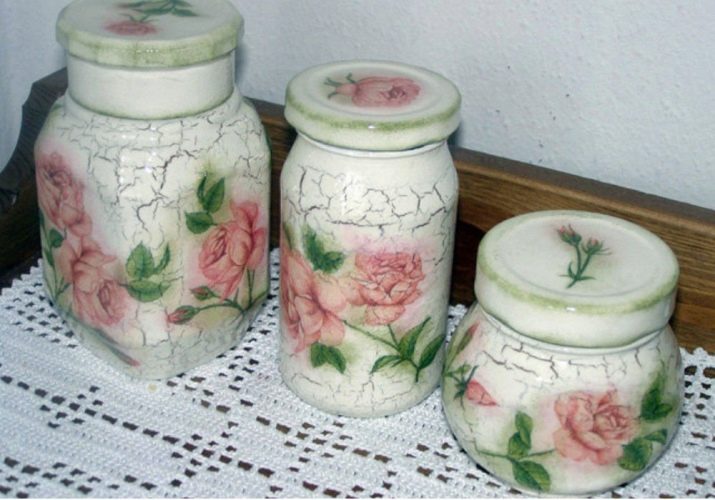
Features
Not every glue is suitable for work, because different brands may vary its composition, and quality. It is on these factors, in the first place, that the period of reliable fixation depends. Although we trust the manufacturer, when buying, you have to consider a number of nuances.
For example, few people know that the consistency of the adhesive is important. It should not be too liquid or thick, because in either case it will complicate the work.

Compositions for decoupage of different brands differ in speed of drying. If it dries instantly, the craftswoman will not have the opportunity to correct the work and straighten the glued paper. She will not be able to smooth out folds and remove air bubbles.

A feature of decoupage glue is the transparency that it acquires when completely dried. As a rule, a high-quality composition does not change its transparency, does not become cloudy and does not turn yellow for a long time, and therefore the craft looks aesthetically attractive for several years. Besides, in good glue there are no harmful chemical additives, and therefore it does not have a sharp synthetic smell.
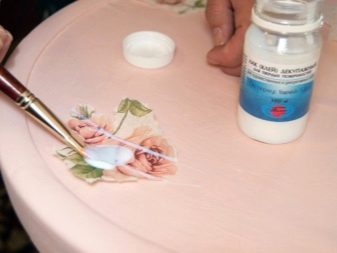

Decoupage adhesive varnish has a number of its features, for example:
- It is specifically designed for this needlework technique;
- his consistency is perfectly maintained;
- when dried, does not distort the colors of the glued pattern;
- sold in special jars indicating the type of needlework;
- can be matte and glossy;
- different for each type of working base (wood, fabric, glass, paper);
- creates a protective film that prevents deformation of the glued fragment;
- It does not have a terrible smell; it is easy to use;
- does not need dilution with water and is not synonymous with PVA glue.

Such glue is sold in needlework stores; it is not available at construction points of sale. The volume of decoupage glue is 50, 150 and 250 ml. Its main drawback is the price, which forces needlewomen to look for analogues with a budget value. That is why they replace decoupage adhesive varnish with other adhesives.

Varieties
Today, there are many types of decoupage glue-varnish. They differ in the type of work surface, texture of the dried look and effect. Note the options that are popular with experienced craftswomen.
- Textile potce - a product for working with fabric, after drying of which the material must be ironed. Excellent glue that withstands washing products at a temperature not exceeding 40 degrees.

- Art potce - a universal composition with which you can work on wood, fabric and glass. It does not require additional varnishing of the treated surface after gluing the pattern and drying.

- Glitter art potch - a variety that differs from the rest by a holographic effect. After drying, it leaves characteristic microparticles with a shine of blue and green tones on a working base.

- Kerzen potch - a separate category for decoupage candles. It is used to lubricate a fragment before fixing it to a wax or paraffin base, as a result of which it does not burn, but melts as the candle burns.

- Porcelain glue - a composition for decoupage of objects that may come into contact with food during use. This glue is dried in the oven, thereby increasing its strength and safety for users of the completed product.

- Mordan - Composition for the most accurate gluing of poured. Depending on the subspecies, it can be oil or water.
Not replaced by PVA glue, designed to fix an expensive decor.


- Mod podge - an expensive option in the form of a spray, eliminating the appearance of air bubbles under the glued fragment. Put it on the base, then stick decoupage paper or other fragments of stickers.
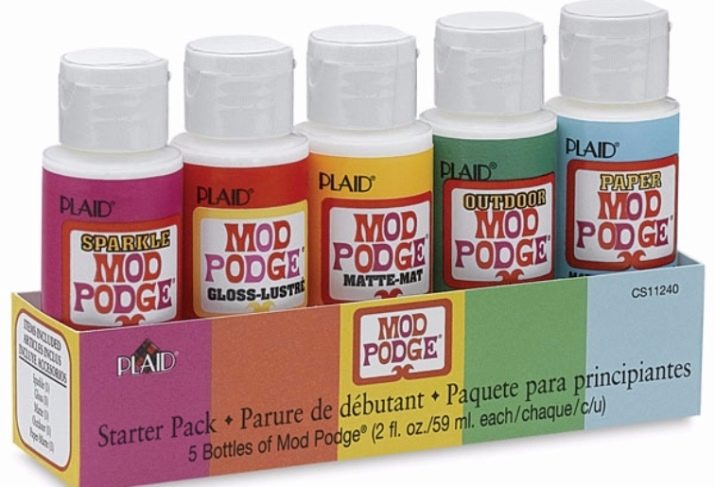
How to replace?
Decoupage adhesive can be replaced. PVA glue in jars, which is sold in hardware stores. It has white color and optimal consistency, however, if desired, it can also be used to create volume when performing the decoupage technique. This glue is different from what is sold in office supplies by quality, it has the best degree of adhesion, despite the external similarity and similarity of smell.

To properly prepare the glue for work, it must be diluted with water. For this, a separate container is prepared in which two parts of the glue are connected to one part of room temperature water. The mass is stirred until smooth using a wooden stick.
Freshly created composition will cope with fixing napkins for decoupage, rice paper and decoupage cards. However, he will not be able to qualitatively adhere to the base of the printout or photograph, and therefore is not suitable for working with them.

How to do it yourself?
Of course, to do it yourself at home glue for decoupage will not work exactly. It can be replaced by other adhesives, although their qualitative properties will be inferior in strength and durability of the fastening.
- You can mix starch with sugar, water and vinegar, taking 1/3 cup sugar in a glass of water. After the syrup boils, vinegar and starch (1/3 cup) are added to it. The finished glue is cooled, after which it is ready to work.
- Take 2 chicken proteins, mix with powdered sugar (two tablespoons), add a little tartaric acid.
This glue is suitable for work if it will be varnished.

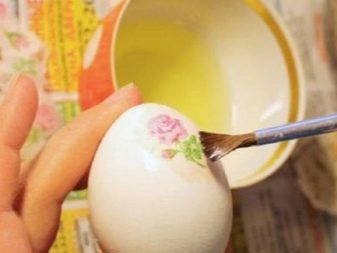
Terms of use
Decoupage glue has its own nuances of application. It is applied dosed using a flat brush. Someone prefers to use a soft sponge in their work. Excess glue can cause uneven bonding of a paper towel or decoupage card. The composition is applied after the picture is prepared, for which it is cut out in the intended form and separated from the rest of the layers.

Someone believes that the napkin must first be moistened in water and only then transferred to the working base.
However, practice proves that moisturizing is undesirable, since the napkin is very difficult to even out, and even more so to transfer.
After the picture is cut out, it can be applied to the place of fixation and smeared with glue on top, impregnating and straightening the paper drawing, avoiding the formation of bubbles. You can put a little glue on the base itself and, having attached the picture, add glue on top, leveling the image with a brush or sponge.

You can’t wait too long - the napkin quickly becomes soft. You can not brush many times in the same place, because this can lead to a rupture of the picture. Spread it out in the direction from the center to the edges.
After the fragment is glued, the brush is washed and cleaned (after drying it will not work, it will be damaged).

The nuances of choice
You need to choose glue based on what type of surface you have to work with. If it does not need a lot, or it is planned to perform decoupage on the bases of various materials, you need to take a universal adhesive varnish. If the decision is made in favor of building PVA, you need to take products of a proven brand.
It is worth considering: the glue volume is quite large, but the use is limited by the expiration date, after which the glue will not be suitable for work. You need to take a jar of a smaller volume, paying attention to the date of manufacture.
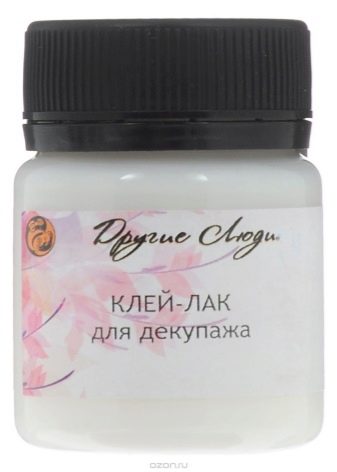
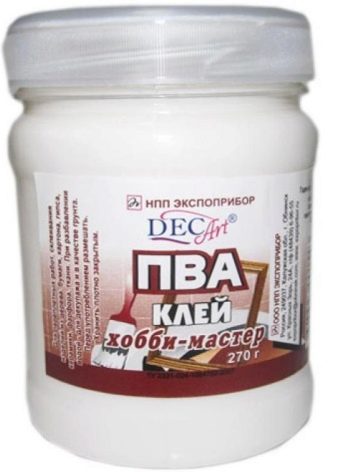
Narrow-profile options are expensive. They are taken by professional craftsmen who are engaged in decoupage constantly. Well established acrylic adhesive for decoupage. After drying, it gains strength and becomes transparent. Such crafts can be coated with clear acrylic varnish.

If you want to make decoupage of hard surfaces, you can purchase the option Mod Podge The formula of this tool combines both glue and varnish. It dries quickly, after drying it gives the surface a frosted texture and the appearance of brush strokes.

Acrylic adhesive Decola provides work with different working surfaces. It dries completely after 12 hours, with a volume of 50 ml it costs about 150 rubles.

Mordan can be purchased when you want to create the effect of gold leaf. It is good for water repellent surfaces (e.g. glass). It dries slowly, differs from other varieties in that gluing can be done only after half an hour from the moment of applying the composition. It is expensive (within 1000 rubles per 250 ml jar).
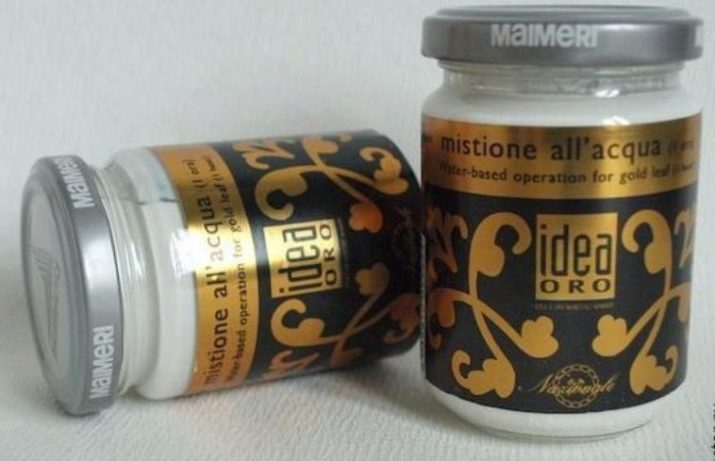
You can find tips on decoupage glue selection in the next video.










